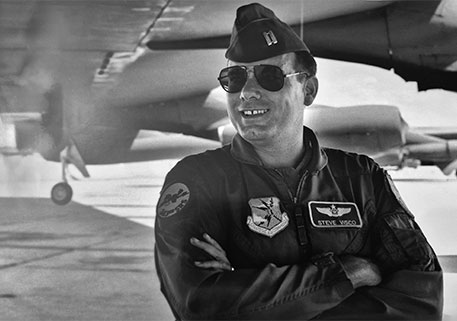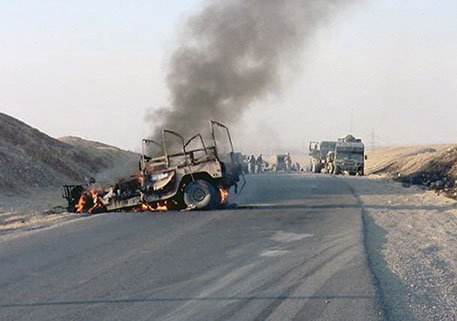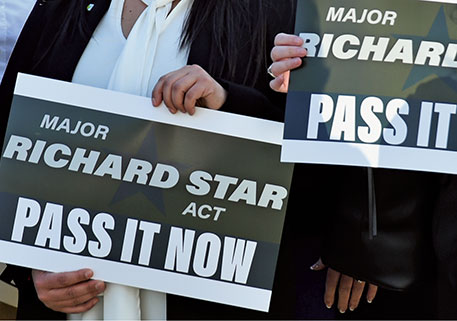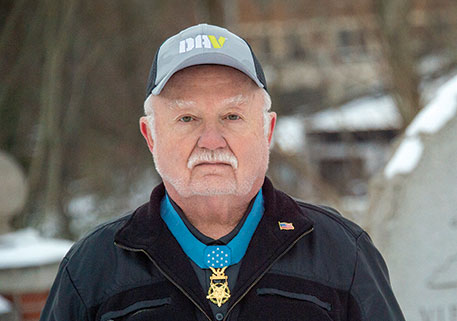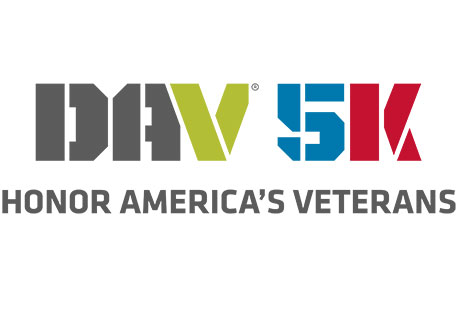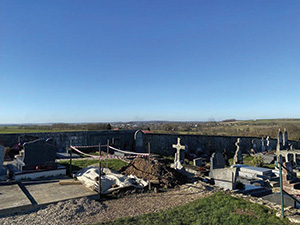
While digging a new grave at his French village’s cemetery in early February 2022, undertaker Jean-Paul Feval unearthed the past.
More than a century earlier, during World War I, American and German forces battled all around where Feval stood in Villers-sur-Fère, France. Hundreds of thousands of troops from both sides fought across the region in July and August 1918, and remnants from the war still surface.
“Artifacts are found around here all the time,” said Hubert “Bert” Caloud, the superintendent of the nearby Oise-Aisne American Cemetery and Memorial.
Oise-Aisne is one of 26 American military cemeteries around the world that the U.S. government’s American Battle Monuments Commission (ABMC) operates and maintains. It started as a temporary battlefield burial ground in 1918 and was dedicated in 1937. More than 6,000 American service members who died in its vicinity are buried there.
But Feval stumbled on more than just artifacts. Along with a trench knife, coat buttons, helmet and rifle rounds, he found human remains.
Feval immediately alerted French authorities, starting a monthslong process to determine the story behind the bones.
In war, there’s sometimes a fine line between death and injury.
Three months after the fighting in Villers-sur-Fère happened and about 100 miles to the east, DAV’s eventual founder, Robert S. Marx, was witnessing this fact firsthand.
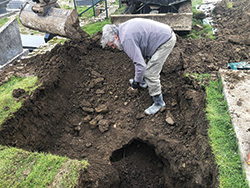
Marx found himself in command of the Army’s 3rd Battalion, 357th Infantry Regiment, during the Meuse-Argonne offensive. All of the regiment’s officers above first lieutenant had been killed when he was sent to take command of the unit.
On Nov. 10, 1918, he was ordered to attack the town of Baâlon, France.
“The barrage was intense, and the shells began to drop with alarming accuracy near our battalion group,” he later wrote. “It seemed to us as if the range was lengthening, so we continued to advance. Then a shell struck almost in our midst. I did not hear it coming, and I seemed to be hit before I knew it or heard the noise. I only knew I was hit in the head.”
He almost died from the blast but continued to direct his troops in the fight as he slipped in and out of consciousness. He was eventually carried off the battlefield and transported to a field hospital for treatment.
The next morning, his surgeon, Capt. J.P. Wall, let him know the war was over. Germany had signed the armistice. Marx was one of the final American casualties of the war.
He would return to his hometown of Cincinnati and resume his pre-military life.
But for many who served in the American Expeditionary Forces, they returned home and entered another fight for the lifetime of care they would need. That’s why Marx established the Disabled American Veterans of the World War as an organization “of us, by us and for us.” More than a century later, that promise to disabled veterans remains the cornerstone of DAV.
That promise extends to those who never made it home, too, said Marty Pennock, the chairman of DAV’s interim POW/MIA Committee. More than 80,000 U.S. service members are still missing from overseas conflicts.
“Every member of DAV—from the national commander on down—fully embraces the obligation of never leaving a fallen comrade behind, no matter how much time has passed,” Pennock said.
The mission of finding, recovering and repatriating service members from World War II and more recent conflicts rests with the Defense POW/MIA Accounting Agency. The agency’s director, Kelly McKeague, speaking at the 2023 DAV National Convention, told attendees his organization’s mission mirrors DAV’s promise.
“Beyond being a national commitment, our mission is a sacred obligation because these are your comrades-in-arms who made the last full measure of devotion. And it’s a moral imperative because they did so for the nation we all love,” said McKeague.
The ABMC assumes responsibility for those missing from World War I.
The commission’s secretary, Charles Djou, also spoke at DAV’s national convention and said that the overseas cemeteries ABMC is responsible for ensure the memory of U.S. service members around the world.
“[These sites] are proof positive of the power of American service and sacrifice,” Djou said, “and yes, a reminder to our communities, to our people and to humanity to the goodness of the American soul.”
Feval’s discovery quickly got the attention of the Office National des Anciens Combattants et Victimes de Guerre—the French government agency that identifies and inters their war dead. If the remains were likely from one of their soldiers, then they’d take possession and responsibility. But the equipment found buried with the remains appeared to be U.S. government issue, so they called Caloud and asked that he be present for the initial excavation of the site.
Finding what were presumably American soldier remains was unheard of in this part of France. Michael Knapp, director of ABMC’s Historical Services Branch, said by the time the U.S. entered World War I, it was more a war of movement than a dug-in battle. The U.S. wasn’t dealing with trench cave-ins and other mass casualty circumstances, so any American remains would likely be just like what Feval discovered: one or maybe two soldiers buried in a battlefield grave.
On Feb. 9, 2022, a day after Feval made his discovery, an initial set of remains and artifacts was removed from the ground and placed in a wooden box. Caloud draped a U.S. flag over the makeshift casket and transported it to the local office of the Gendarmerie Nationale, France’s rural police, for safekeeping until authorities determined the next steps. The gendarmes lined up and saluted as Caloud and his team from Oise-Aisne carried the remains pallbearer-style into the building.
“I treated him like he was one of mine,” Caloud, a retired Marine sergeant major, said.
There was likely more of this unknown soldier to unearth. Two weeks later, Caloud, in cooperation with French authorities and along with French World War I expert and archaeologist Yves Desfossés, excavated the rest of the battlefield grave.
The second dig brought up metal parts of a stretcher, an illegible identification tag and more bone fragments.
Pictures of the artifacts were sent to Knapp’s team for identification. Before a proper burial could happen, there needed to be proof beyond a reasonable doubt of the nationality of the remains.
Every artifact, from the trench knife to the ammunition, was U.S. government issue, leading Knapp and his team to believe the remains were American.
“There’s just no doubt about it,” he said.
His team also cross-referenced the artifacts with a memoir by the Rev. Francis P. Duffy, a highly decorated Army chaplain with the famed “Rainbow Division.” Duffy mentions that several of the dead from the 165th Regiment, 42nd Division, were buried along the wall of the Villers-sur-Fère cemetery exactly where these remains were found.
French and British authorities concurred with these findings. Although there was no way to determine the identity of the soldier, the remains were American.
Caloud’s focus shifted to planning a funeral at Oise-Aisne American Cemetery. This would be the first burial at this cemetery since 1932 and the first burial of any World War I unknown in an overseas American cemetery since 1988.
On June 7, 2023, the unknown American soldier received a full-honors funeral and was laid to rest with the men he fought beside.
“I just felt happy that he’s with his own guys,” Caloud said.
During the funeral, then-Army Chief of Staff Gen. James McConville presented the U.S. flag that draped over the soldier’s coffin to the mayor of Villers-sur-Fère as a gift of appreciation. Feval, the local undertaker, died before the funeral, but Caloud said none of this would’ve happened without him.
“Mr. Feval could have easily said, ‘Hey, this trench knife is really cool,’ and then shoved the rest of it back into the dirt,” Caloud said. “So my gratitude to him.”

